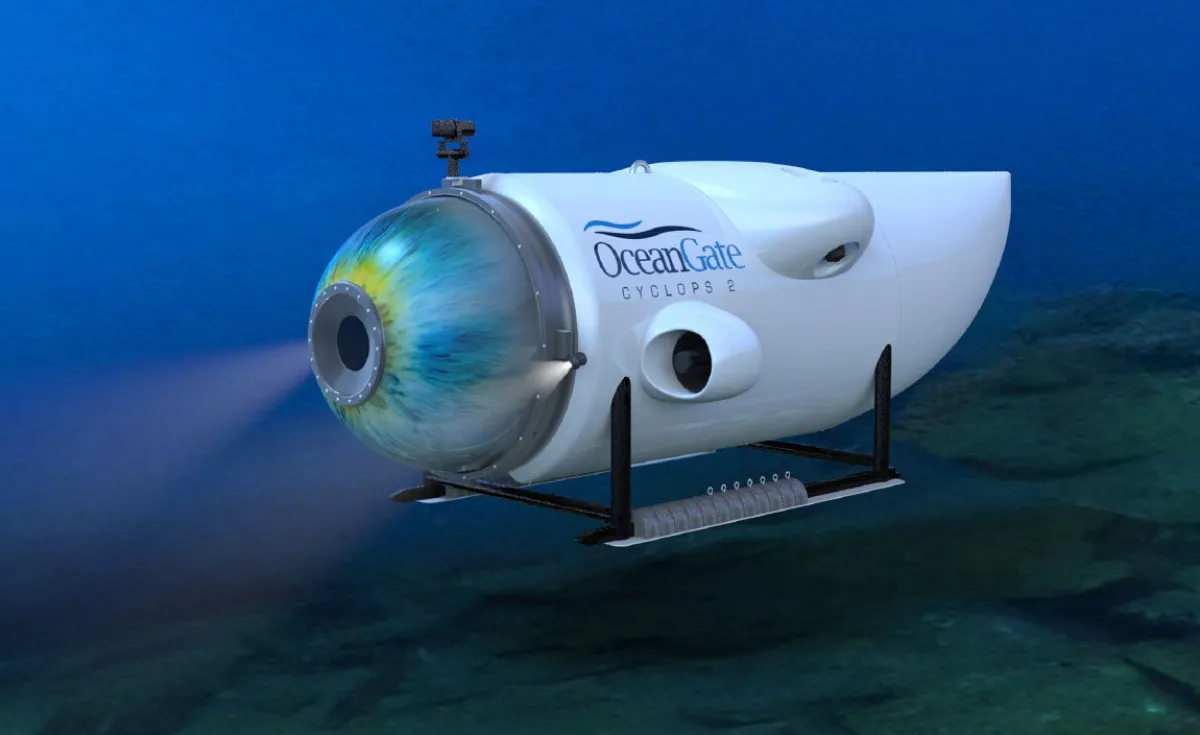Rescue workers raced to beat a rapidly closing oxygen window Wednesday evening as they hunt for a missing submersible near the wreck of the Titanic, after noises detected by sonar raised hopes the five people onboard are still alive.
The small sub, whose passengers are said to have less than 20 hours of oxygen left, is thought to be the source of the sounds, but the US Coast Guard claimed it had not yet determined whether it was.
‘We don’t know what they are, to be frank with you,’ Captain Jamie Frederick said of the underwater noises picked up late Tuesday by a Canadian aircraft, but he added: “We have to remain optimistic and hopeful.”
Extra ships, specialized salvage equipment, and US Navy experts converged on the vast search area in the North Atlantic as rescuers, who have received help from around the world, concentrated their efforts near the sounds.
‘We’re searching in the area where the noises were detected and we’ll continue to do so,’ Frederick told reporters in Boston.
The 21-foot (6.5-meter) tourist craft lost communication with its mothership less than two hours into its descent Sunday to see the remains of the Titanic, which sits more than two miles (nearly four kilometers) below the surface of the ocean.
Read Also: Malaysia Nabs Chinese Ship Suspected Of Looting WW2 Wrecks
The submersible, named Titan, was carrying British billionaire Hamish Harding and Pakistani tycoon Shahzada Dawood and his son Suleman, who also have British citizenship.
OceanGate Expeditions charges $250,000 for a seat on the sub.
Also on board is the company’s CEO, Stockton Rush, and a French submarine operator Paul-Henri Nargeolet, nicknamed ‘Mr Titanic’ for his frequent dives at the site.
Africa Today News, New York gathered that the ships and planes have scoured 10,000 square miles (around 20,000 square kilometers) of surface water — roughly the size of Massachusetts — for the vessel, which was attempting to dive about 400 miles off the coast of Newfoundland, Canada.
After the noises were detected, rescuers relocated two remotely operated vehicles (ROV) that search under the water and one surface vessel with sonar capability, the US Coast Guard said.
The ROV searches have so far not yielded results but data from the Canadian aircraft has been shared with US Navy experts for acoustics analysis.
‘There have been multiple reports of noises and every one of those noises is being analyzed,’ said Carl Hartsfield, from the Woods Hole Oceanographic Institution.
He added that the sounds ‘have been described as banging noises.’
Frederick said the number of surface vessels in the search would double from five to 10 in the next 24 to 48 hours.
The Navy has sent a specialized winch system for lifting heavy objects from extreme depths, other equipment and personnel; and the Pentagon is deploying a third C-130 aircraft and three C-17s.
